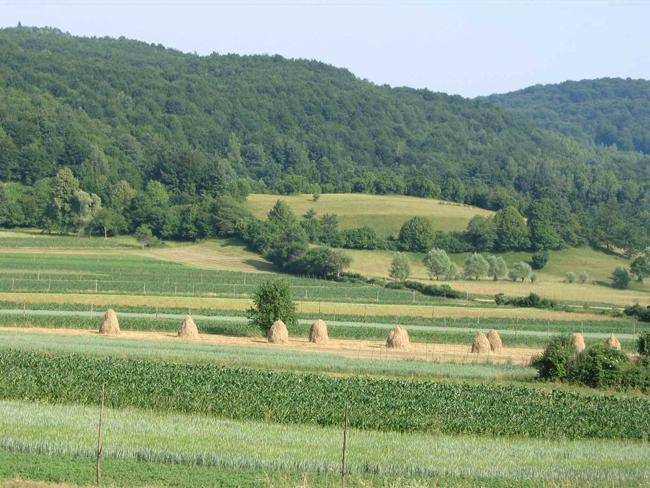
Many of the countryside photos were taken from inside our bus and may show some reflection from the windows.
The Cotswolds is an area in south central England containing the Cotswold Hills, a range of rolling hills which rise from the meadows of the upper Thames to an escarpment, known as the Cotswold Edge, above the Severn Valley and Evesham Vale. The area is defined by the bedrock of Jurassic limestone that creates a type of grassland habitat rare in the UK and that is quarried for the golden coloured Cotswold stone. It contains unique features derived from the use of this mineral; the predominantly rural landscape contains stone-built villages, historical towns and stately homes and gardens.
The well-established boundaries of the Cotswolds have expanded considerably since moving out of the cities and into the countryside gained popularity. Now the Cotswolds boundaries are roughly 25 miles (40 km) across and 90 miles (145 km) long, stretching south-west from just south of Stratford-upon-Avon to just south of Bath. It lies across the boundaries of several English counties; mainly Gloucestershire and Oxfordshire, and parts of Wiltshire, Somerset, Worcestershire and Warwickshire. The hills give their name to the Cotswold local-government district in Gloucestershire, which administers a large part of the area. The highest point of the region is Cleeve Hill at 1,083 ft (330 m),[2] just to the north of Cheltenham.
The above is taken from Wikiipedia. Check out the full article at Wikipedia.org
